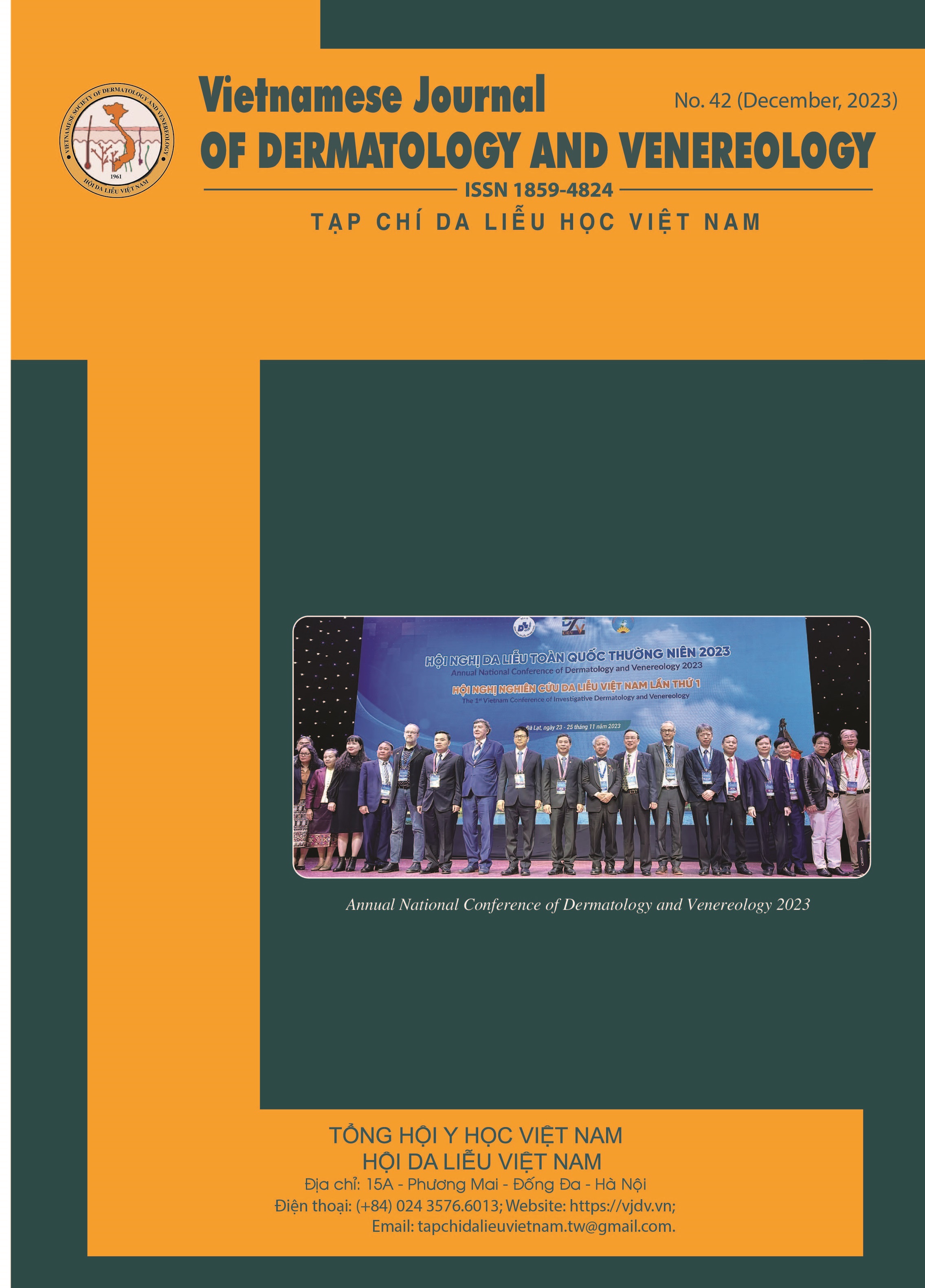NASAL RECONSTRUCTION AFTER MOHS SURGERY: MANAGEMENT OF DEFECTS ACCCORDING TO ANATOMICAL UNITS AND DIMENSIONS
DOI:
https://doi.org/10.56320/tcdlhvn.42.130Từ khóa:
Basal cell carcinoma, nasal defects, nasal reconstructionTóm tắt
Objectives: Skin cancer frequently affects the nose, particularly in sun-exposed areas such as the ala, apex, root, and bridge. Even minor nasal lesions can pose aesthetic and psychosocial challenges for patients, necessitating nasal reconstruction tailored to anatomical units and defect size. The primary goal of reconstructive surgery is to restore the original shape, emphasizing three-dimensional space, symmetry, color, and compatibility with surrounding tissue structures. Despite numerous options for post-cancer surgery reconstruction, establishing a gold standard for nasal defect management remains elusive.
Materials and Methods: A retrospective study was conducted in 41 patients following Mohs surgery for basal cell carcinoma. Defects are approached based on rhinoplasty principles, considering anatomical units, defect size, and location to select appropriate reconstruction methods.
Results: Among the patients, 17 (41.5%) had nasal alar defects, 5 (12.2%) had nasal apex defects, 4 (9.8%) had nasal root defects, 7 (17.1%) had nasal bridge defects, and 9 (22%) had complex defects involving multiple anatomical units. Patients with nasal alar defects <1.5cm underwent reconstruction using the nasolabial flap, while those with larger defects (>1.5cm) underwent forehead flap reconstruction, including auricular cartilage grafts for nasal alar defects. Complex lesions (22%) were reconstructed using a combination of forehead flap and rotation or V-Y flap. Nasal root defects (7.3%) were reconstructed using the glabellar flap.
Conclusion: Nasal reconstruction, employing local or regional flaps, consistently yields positive functional and aesthetic outcomes due to the similarity in color and skin flap thickness with adjacent structures. The forehead flap, with its constant blood supply, vitality, and versatile design, is particularly effective for complex nasal lesions.
Received 29 June 2023
Revised 27 September 2023
Accepted 29 November 2023





